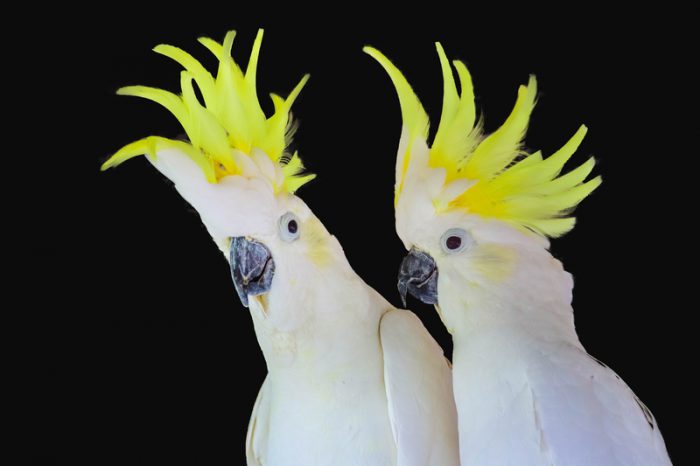The sulphur-crested cockatoo is a bird that is well known for its loud calls—especially its ability to mimic the sounds of humans, other animals, and even technology. These large, white parrots are also a symbol of Australian wildlife.
And they're not just in the wild anymore.
Over the last few decades, the extremely intelligent birds have become increasingly common in urban areas. And we don't mean as pets. They have adapted very well to living alongside humans—much like other urban animals, they have been attracted the abundance of free food available thanks to what is thrown away in the garbage. And according to a new international study, they will happily serve themselves, thank you very much.
That's right. Cockatoos know how to open garbage cans. And they're teaching one another how to do it, too.
Flip and feed
For the past few years, researchers at the Australian Museum Research Institute in Sydney have joined forces with minds at the Max Planck Institute of Animal Behavioral in Germany to study how cockatoos flip the lids of suburban waste bins to get a meal.
The study was started by Richard Major, a bird ecologist who noticed some very interesting bird behaviour on his way to work one day. He long notice that cockatoos would feed at the bins that lined the streets on garbage day. But he'd always thought that this was because the lids blew open, or had been left open by absent minded neighbours. But then he saw it with his own eyes.
A bird actually opening a bin for itself. This called for a study!
Observe them serving
Cockatoos are pretty common in Sydney these days! (Getty Embed)
Though a study on birds raiding garbage bins might seem a bit silly or unimportant, Major and his colleagues saw it as an incredible opportunity. They got to watch a newly learned behaviour spread across an animal population in real time. And right on their doorstep!
What have they learned in three total years of study?
First, it spreading fast. His research found that the behaviour went from being in only three Sydney neighbourhoods in 2018 to 44 in 2019. How was the behaviour expanding so quickly?
Their research showed that the birds are learning by observing each other do it. They also noticed that birds in different areas use a slightly different technique to open the lids. Some flip. Some prop it open slowly with their beaks. Some use their feet.
Also, not every bird gets in on the action. Only around 10 percent of the birds that feed are lid-flippers. The rest just sit back and wait for the opportunity to chow down. And the most common birds doing this are males, who also dominate the bird's social structures.
Watch them do it in the video below.
Cockatoo proof bins?
Of course, here in Canada (and especially in Toronto, where OWLconnected is based), it's impossible to hear this story and not think of the battle to protect garbage bins from marauding raccoons. In Sydney, some people have tried placing rocks on the bins, but the birds just knock them off. After years of similar measures in Toronto—as well as cables, ropes, and even padlocks—the city officially unveiled a new line of raccoon-proof compost bins in 2016. At a cost of $31 million!
How have the bins worked? It is definitely a huge improvement, though there is some video evidence of a few raccoons figuring out how to get inside. Will Sydney and other Australian cities need to do something similar to cockatoo-proof their own bins?
We'll probably find out pretty soon.
 "Are you thinking what I'm thinking?" "Let's go open a garbage can!" (ID 151741982 © Akarat Duangkhong | Dreamstime.com)
"Are you thinking what I'm thinking?" "Let's go open a garbage can!" (ID 151741982 © Akarat Duangkhong | Dreamstime.com)









